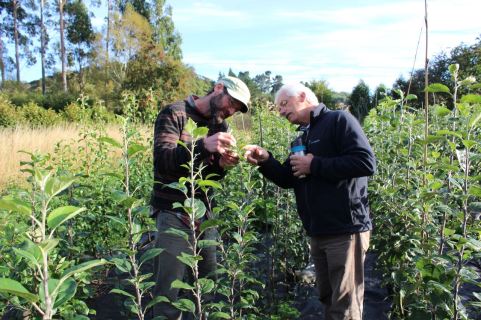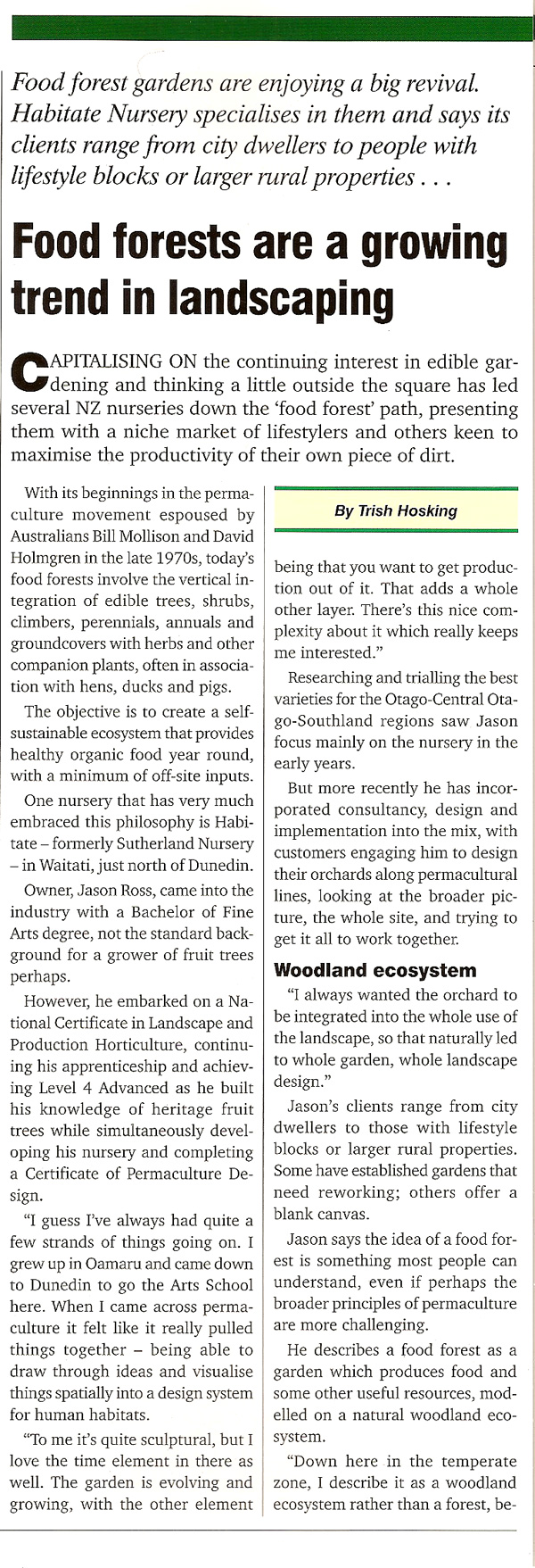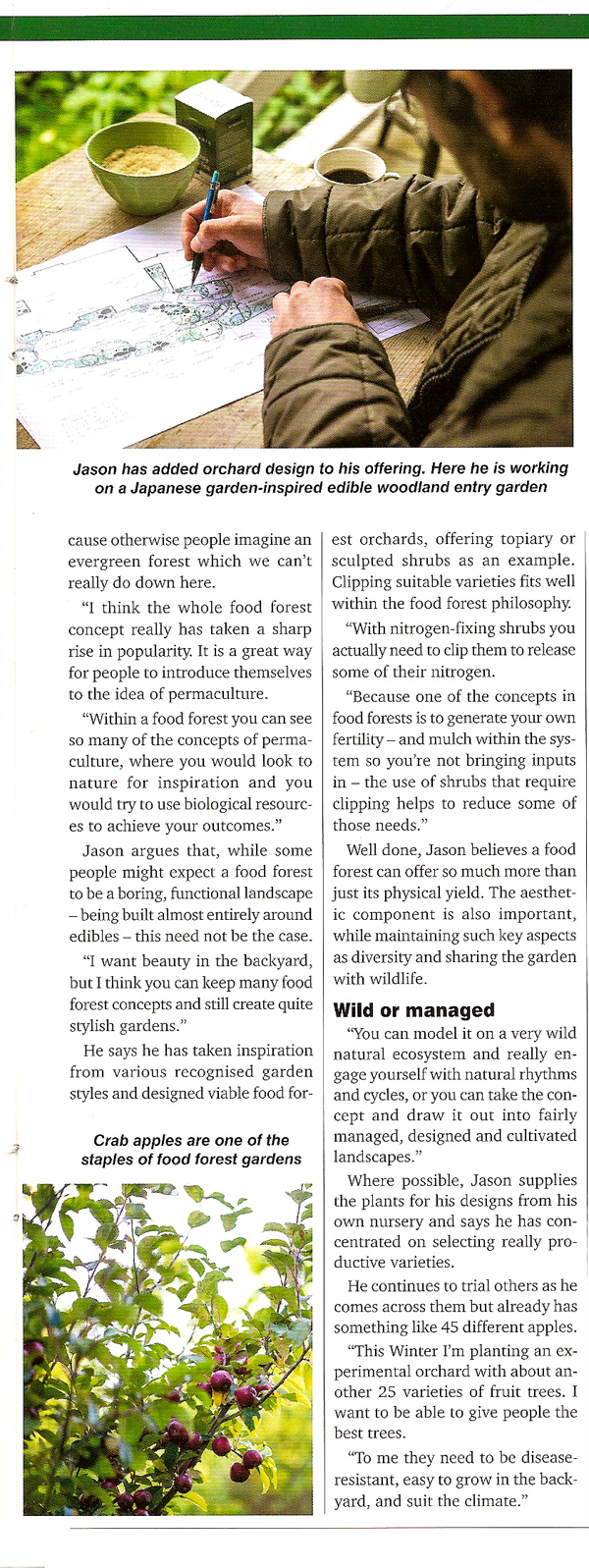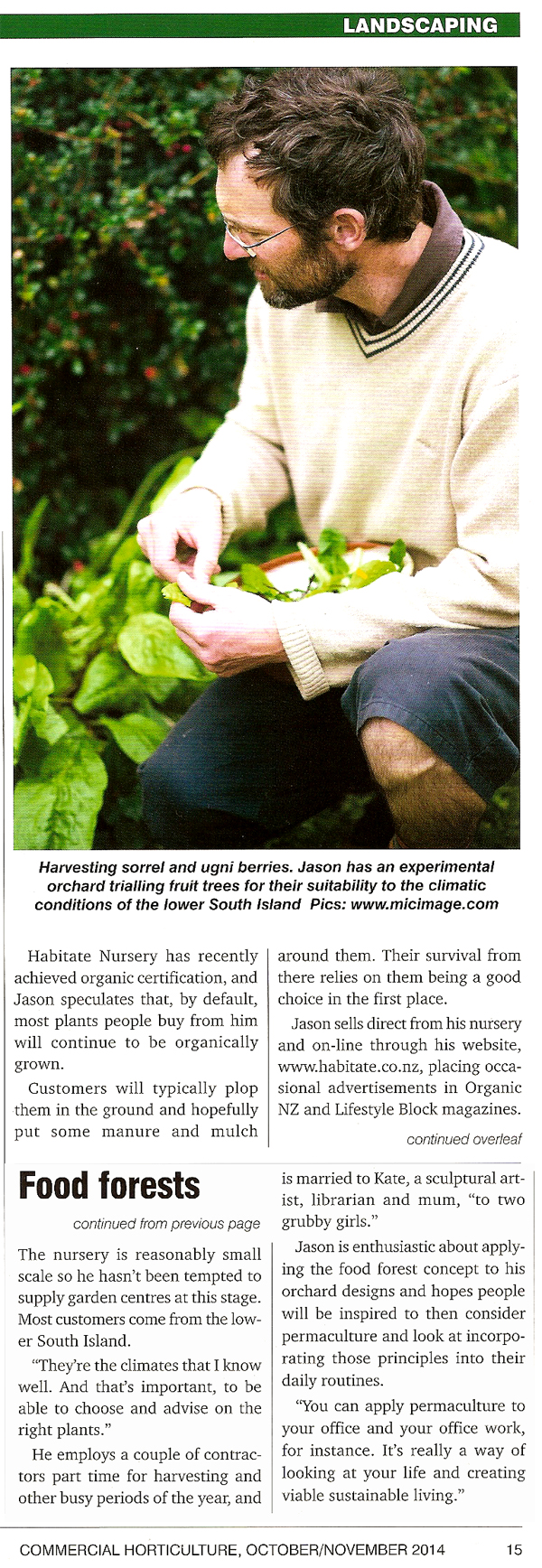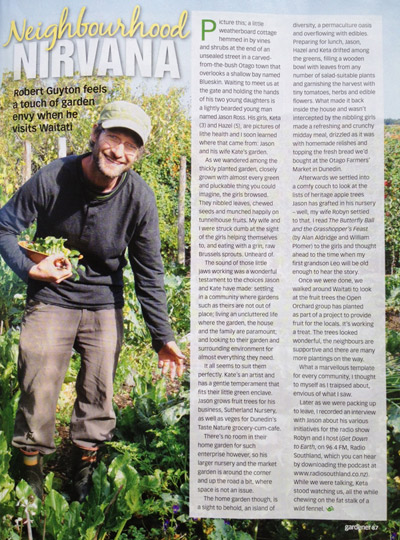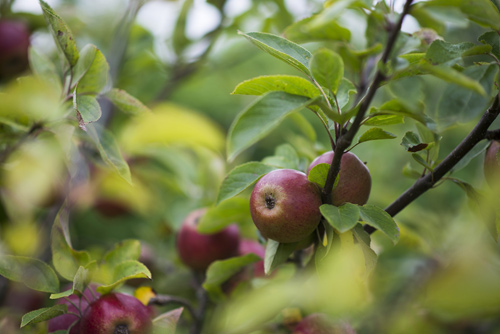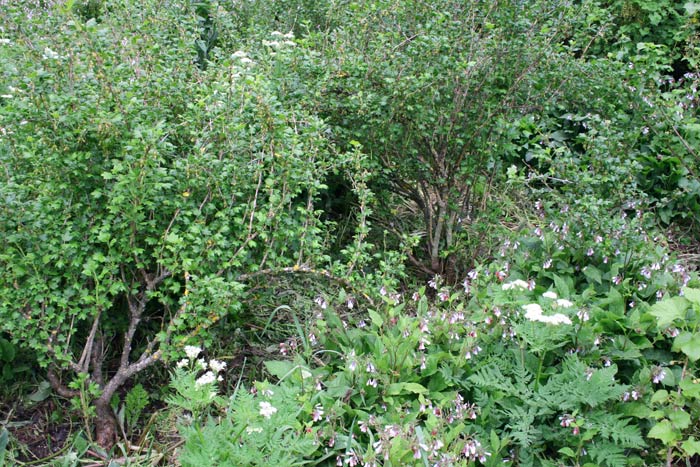 I was contacted by Debby Luquette, a Master Gardener with the Pennsylvania Extension Service in the USA, for permission to use my photos for the introductory talk on edible forest gardens reproduced below (Click the link for slides).
I was contacted by Debby Luquette, a Master Gardener with the Pennsylvania Extension Service in the USA, for permission to use my photos for the introductory talk on edible forest gardens reproduced below (Click the link for slides).
It is interesting that she places forest gardening in the context of North American wild plants.
Forest Gardening Debby Luquette HGE March2018 SLIDES (LARGE FILE)
Edible Forest Gardening – Home Garden Essentials, 2018
Imagine this is the spring of 1491. Imagine what this landscape would look like. Imagine the plants would be here.
Are you thinking that most of the land would be covered in trees? What kind of trees? By some estimates, 40% would be chestnuts, the tall, straight American chestnuts, not the Chinese variety, which has a shorter, more sprawling habit. There would be a lot of oaks, too. Here and there a persimmon would find its way to the canopy. Along the banks of streams, pawpaws would be reaching for light at the edge of the forest. West of here, blueberries would occupy the drier, rockier soils of the mountains. Animals took advantage of the bounty of food available- deer, turkeys, grouse, bears, squirrels and many other creatures.
This may be familiar to us as the assortment of food that the Native Americans contributed to the first Thanksgiving, along with corn, squash, beans and a few other cultivated annual plants. What would that tell us about how the Native Americans sustained themselves before European agricultural practices changed the landscape? In fact, environmental anthropologists speculate that the Indians actually cultivated the forest garden using techniques such as slash-and-burn, cutting openings in the canopy to encourage regeneration of plants they used for food, fiber and medicine.
Today there are people who are studying the benefits of this type of forest gardening, and beginning to establish these gardens themselves. The purpose of a forest garden is implied in the landscape of 1491.The forest is maintained to grow food, medicines and other useful products. But the scale of a suburban backyard is a lot different, and consequently, because of the size constraint, it requires that such a garden should be thoroughly planned. A small, homestead forest garden can even be grown on less than an acre of land. Obviously, we won’t grow a ‘forest’ on less than an acre, but we can bring together elements of a forest that fit the available space and the desired food plants. There won’t be room for too many trees, but there will be room for shrubs and perennials.
To figure out how this could be accomplished we need to look at the form and function of a forest. Since the colonial days after most of the original forest in eastern North America has disappeared, a forest develops on a piece of land that is disturbed, generally by farming, and left to grow back. It goes through a process ecologists call succession, a process taking several stages and a few decades. The forest is the last stage of succession, when mature trees occupy as many spaces as they can. This creates shade that makes it difficult for plants that are not shade tolerant to thrive. The shade tolerant subcanopy and shrubs, fill in spaces between trees. Groundcover, mostly ferns and perennial herbs, occupy the remaining space. This forest remains, regenerating itself unless some disturbance opens a gap. In the post disturbance gaps, fast growing opportunistic trees and shrubs get a chance to grow for awhile, before the forest canopy closes in again. This is what we try to recreate in the forest garden.
As one type of vegetation replaces another through the successional process, soil and water dynamics are also changing. In a forest, organic matter and a network of living roots holds soil and retains water. Soil microflora – nematodes, fungi and bacteria – decompose complex organic matter and help distribute it, making it available to tree roots. Undisturbed forest soil has been drastically altered by agricultural practices, not only removing the water retention ability of the soil, but also disrupting healthy communities of microflora. Organic matter has largely disappeared from the soil, leaving no food for the soil microflora. The natural process of ecological succession restores much of the soil health.
Forest gardens generally aim at maintaining a post disturbance dynamic, where the fast-growing, sun-loving opportunistic species of food plants grow alongside a stand of slow-growing, mature forest trees. Building and maintaining a forest garden restores much of the water retention ability and soil microorganisms. But instead of leaving the community of plants that develops to chance, growing from seeds that find their way to the plot of land, the forest gardener deliberately chooses the desirable trees, shrubs and perennials and their placement. He or she then encourages their growth by removing the unwanted species – weeds – that are also trying to take advantage of a disturbed spot. Re-shaping the land with swales and patiently nurturing desired plants with mulches, first from an outside source and eventually from the garden itself, develops water holding capacity and a healthy soil microflora.
Have you heard the term ‘permaculture’ before? The word is shortened from permanent culture, that is, cultivating an area with perennials. It becomes is a system of decision making with the goal of building healthy soil, and a healthy ecosystem. Once an area is planted in perennials, there is minimal disturbance, so the initial planting should be well designed, choosing plants that complement each other in their function and form. Edible Forest Gardening is the epitome of this concept, In fact, it is the most practical form of permaculture for the Eastern US, where a forest is the vegetation form that occur without human interference.
When the garden we want is designed such that all the open areas between larger plants are filled with shrubs and perennial ground covers – many of them edible – weeds are less of an issue and maintenance is easier. Since weeds are plants that colonize a space when a niche appears (that is, a space suitable to their growth becomes available), weeding will need to be done, especially in the years it takes for desired plants to completely fill in open ground. One recommendation for maintaining an established garden I have seen more than once is that the gardener should always have a desirable plant ready to place into any open space that occurs.
In an edible forest garden, it’s easy to think that the main plants will be trees, and we select them for their use, usually that will be giving us fruit or nuts. Beneath the tree canopy, there is a subcanopy, trees of shorter stature that can tolerate shade well. These are going to be partial shade and shade lovers, pawpaws for example. In a backyard forest garden, these can be the main features, as semidwarf fruits and pawpaws.
Next smallest plants are the multi-stemmed, vigorous shrubs, which might include plants such as hazelnuts and high bush blueberries. Vines can climb the taller plants, adding more productivity. Then closer to the ‘edge,’ where there is more sunlight, we can find place for some brambles and other small fruits. Then there is the ground cover, annuals and perennials. These can be food plants, but also herbs. Annuals can be used, but somehow they will need annual replacing, whether we put in partially grown plants or they are self-seeding.
Some forest gardeners grow plants referred to as dynamic accumulators, like comfrey, which have long tap roots that draw nutrients from deep in the soil to the vegetation above the soil. They can be periodically cut to use as high nutrient, ‘chop-and-drop’ mulch. And we absolutely need to include plants used to attract and feed beneficial insects – pollinators and predatory insects which parasitize pest species. These can be have a dual purpose as herbs and nutrient accumulators, too.
What would a forest garden look like on a small plot of land? Probably a lot like a patch of forest. I’ve seen this type of gardening referred to as edible landscaping, a form of ‘permaculture,’ where home landscaping takes on an edible focus. The goal is to plant one’s yard with plants that will not be harvested, ripped out and replanted again the next year. But there is also a place for putting nice looking annual vegetables – multi-colored lettuces, peppers, kale, or zucchini – between the perennials.
The easiest way to start an edible forest garden is with one or two patches, sometimes called guilds. Usually one larger woody plant, situated in a small plot or patch and that become the center of the focus, the centerpiece of the patch. Shrubs and perennials will fill in around it. Perennial vegetables and flowers that attract beneficial insects form the outside perimeter of the patch. The patch eventually takes on a self-sustaining form with healthy soil, good water use and retention, a community of insects you want to control the ones you don’t, no room for weeds, low maintenance, and best of all – Food! In some schemes, there are areas that will support annuals that are rotated between patches. These patches contain the plants selected to complement each other, not just in function, but in how they can nurture each other. Think about nitrogen fixing legumes as these companion plants. One patch can be placed in a damp area and another in a drier area, each with plants that are better suited for the different soil types in each patch.
Animals are included in any complete ecosystem. I’ve already mentioned insects, which can serve as pollinators. here are some insects that serve as both pollinators and predators of unwanted insects, as well as parasitoids. Toads can be helpful residents of the garden as well. Chickens are also welcome. However, from the time I started learning about forest gardening, with their wonderful descriptions of various food plants, growing in profusion, one in amongst others, my reaction was that I would be building a deer smorgasbord. For them, we have an electric fence. Rabbits, voles and other small animals would support populations of foxes, hawks and owls, if we could be lucky enough to have them living nearby. Otherwise you need to fence them out, as well. There would be fructivorous birds who would appreciate our efforts, and nets over the berries and orchard fruits are the only solution to these hungry neighbors.
Another way of landscaping on medium sized backyards, is to build the garden in concentric circles, with the zones arranged by how often you visit them. Areas of garden that will be visited for frequent harvest or pleasure are planted closer to the back door, and zones beyond them planted by anticipated use. The innermost zone then will have the landscaping you wish, intermixed with herbs, salad vegetables and annual vegetables. Just beyond this space, there will be patches of trees and shrubs with their associated non-woody perennials and ground covers. If animals are included in the concept, they shouldn’t be farther away from the back door.
All this is a lot of information, but it is meant to give you something to chew on, think about and perhaps try. This is a garden that is planted for the long term. Planning is essential, but it is hard to make a huge mistake. Swapping out combinations of shorted-lived plants that don’t work around the trees and shrubs is possible. You will find plant combinations that you like and some that don’t, but that is part of the fun and art of forest gardening. Enjoy, and happy, healthy eating!
References:
Tobey Hemenway. 2009. Gaia’s Garden. Chelsea Green Publishing Company. White River Junction, VT
Dave Jacke and Eric Toensmeier. 2005. Edible Forests Gardens. Chelsea Green Publishing Company. White River Junction, VT
Other Useful Books:
Walliser, Jessica. 2014. Attracting Beneficial Insects, A Natural Approach to Pest Control. Timber Press. Portland OR
Lee-Maider, Eric, et al. 2014. Farming with Native Beneficial Insects, Ecological Pest Control Solutions. The Xerces Society. Storey Publishing. North Adams MA
Adapted from Jacke and Toensmeier:
Essence of a forest:
INPUTS – Develop the land and garden for
- Self-renewing fertility
- Sustainable water demand
- Minimal herbivory
POLYCULTURE: Plants Form an Ecosystems with Self-maintaining Dynamics:
YIELD:
- highly diverse products – food, (fiber and medicine)
- Directed Succession – that means we maintain the ‘forest’ in a state we desire
- Maximum Ecological Health
From Jason Ross: Key Features of Natural Woodlands That Can Be Applies to Food Forests:
The whole is greater than the sum of its parts: the parts work together in symbiotic relationships for mutual benefits.
Energy is captured and cycled within the system. There is a high diversity of plants, animals and insects.
Seven Plant Layers: Roots, ground cover, herbaceous, shrub, vines, trees and canopy tree.
The edges between trees and clearings are enhanced as they are highly productive and diverse
Additional Features and Strategies Employed in a Cultivated Food Forest:
– Main crops are from trees, shrubs and perennial plants
– Self-seeding annual crops are included
– Disease resistant plants and animals suited to the climate are chosen
– Support plants are included to improve and maintain soil fertility, exclude weeds and provide food
and habitat for beneficial insects
– Plants and animals are chosen and placed to provide multiple functions: they each have multiple
yields and roles
– Landscaping and planning is designed for maximum water storage
– Requires few outside inputs after set up
– Low maintenance by systems thinking and designing
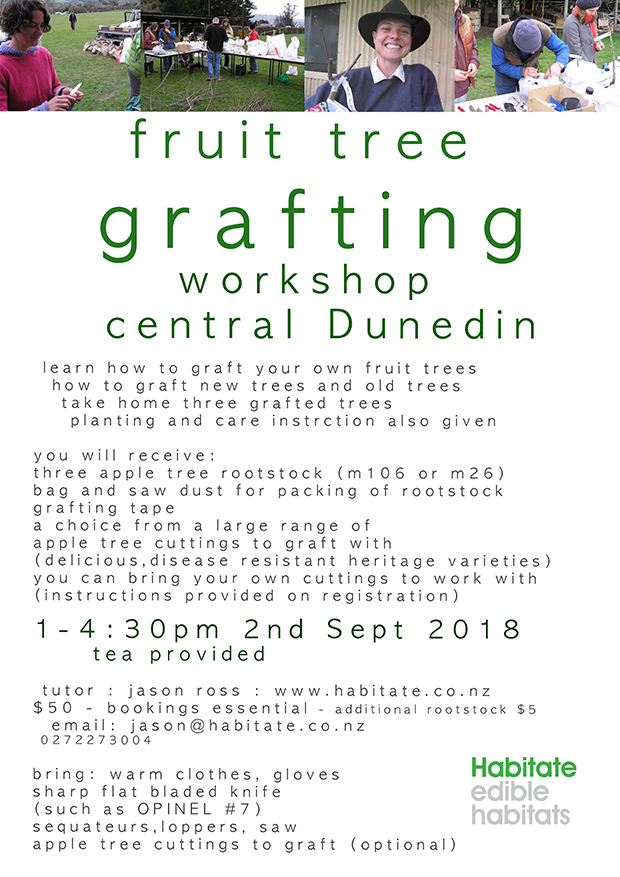 fruit tree grafting workshop central Dunedin
fruit tree grafting workshop central Dunedin I was contacted by Debby Luquette, a Master Gardener with the Pennsylvania Extension Service in the USA, for permission to use my photos for the introductory talk on edible forest gardens reproduced below (Click the link for slides).
I was contacted by Debby Luquette, a Master Gardener with the Pennsylvania Extension Service in the USA, for permission to use my photos for the introductory talk on edible forest gardens reproduced below (Click the link for slides).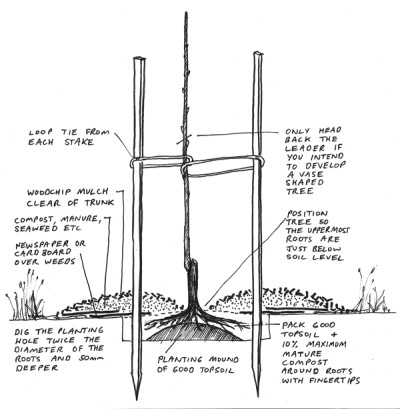
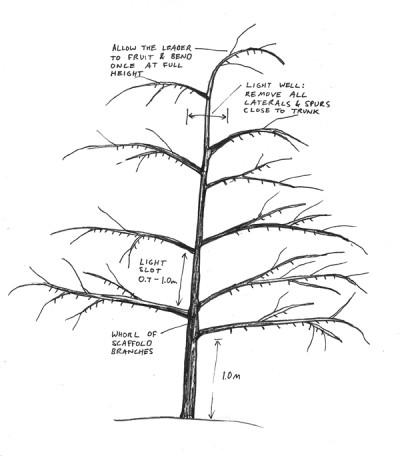 Central Leader
Central Leader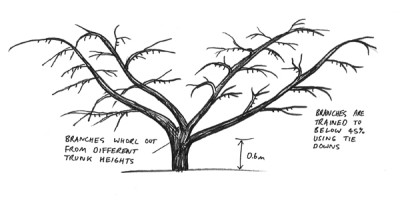 Vase Shape Trees
Vase Shape Trees